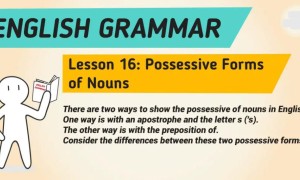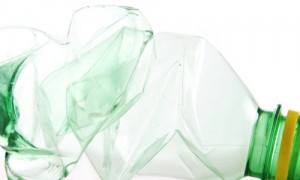Basic Information
Chinese name: beautiful buttocks
pinyin meitun
Foreign name: Beautiful buttock
Definition: plump, upturned buttocks
In a series of cross-cultural studies, men of all ages found women with a waist-to-hip ratio of 0.7 to be the most attractive.
Related concepts
Hip circumference: The horizontal circumference of the most protruding part of the buttocks, measured with a soft ruler. Hip Width: The horizontal horizontal distance between the most outwardly protruding parts of the buttocks. Hip thickness: at the height of the rear most prominent part of the buttocks, the horizontal straight line distance between the front and rear most prominent parts of the buttocks parallel to the sagittal plane [4]. Upper thigh length: The distance from the waistline (WL) to the perineal point (CR).
hip circumference
①Hip circumference: The average of Asian men is 88.82cm, the average of Asian women is 91.66cm; the average of European and American men is 98.37cm, and the average of European and American women is 96.69cm. Height and hip circumference index = (hip circumference/height) × 100: the average of Asian men is 52.07, the average of Asian women is 57.78; the average of European and American men is 56.03, and the average of European and American women is 59.34. It can be seen that the average hip circumference is similar for both genders, and the mean (hip circumference/height) × 100 is significantly larger for women than men. That is, women's hips are relatively larger.
hip width
Hip width: Asian men average 32.78cm, Asian women average 33.07cm[8]; European and American men average 34.18cm, and European and American women average 34.27cm[7]. (Hip width/height)×100: Asian men average 19.12, Asian women average 20.78[8]; European and American men average 19.47, and European and American women average 21.03[7]. It can be seen that the average hip width of women is slightly larger than that of men, and the average of (hip width/height) × 100 is significantly larger than that of men. That is, women have wider hips.
Sitting hip width: Asian men average 34.08cm, Asian women average 36.4cm; European and American men average 36.68cm, European and American women average 38.45cm. (sitting hip width/height) × 100: the average of Asian men is 19.88, the average of Asian women is 22.87; the average of European and American men is 20.89, and the average of European and American women is 23.60. It can be seen that the average sitting hip width for women is slightly larger than that for men, and the average (sitting hip width/height) × 100 for women is significantly larger than that for men.
The beauty of men's narrow buttocks
female preference
In one study, 18- to 30-year-old women were asked to describe the body type of men they liked, and they generally preferred men with slender legs, broad shoulders, narrow hips, and a "V" shape; most disliked stubby The legs, shoulders are narrow and the hips are wide, showing a "pear" shape (S.J.Korn, 1975). Actor Tom Hanks asked his friend Rob Reiner what women are after these days, and Reiner gave the answer in his 1993 film Sleepless in Seattle: "The developed Pecs and a tiny butt."
The beauty of women's fat buttocks
male preference
Studies have shown that sex hormones can affect the accumulation of fat. Testosterone, the male hormone, can increase the accumulation of fat in the abdomen and reduce the accumulation of fat in the buttocks and thighs. On the contrary, estrogen, the female hormone, suppresses the accumulation of fat in the abdomen and increases the accumulation of fat in the buttocks and thighs. Therefore, due to the action of different hormones, adult males and adult females have completely opposite physical characteristics in the waist, buttocks and thighs. Waist-to-Hip Ratio (WHR) is an easy-to-observe stable indicator that reflects internal physiological processes. The next step is to determine the relationship between waist-to-hip ratio and fertility. DeRidder's research demonstrated that women with a small waist-to-hip ratio developed earlier (DeRidder et al., 1990). His research identified the relationship between waist-to-hip ratio and fertility. In the study, women with a larger waist-to-hip ratio had a harder time getting pregnant, and they had their first child at a later age than women with a smaller waist-to-hip ratio. Waist-to-hip ratio can also be used to reflect general health. For example, studies have shown that people with smaller waist-to-hip ratios have a lower risk of diabetes, coronary heart disease and stroke. Clearly, women who are in good health are also better suited to conceive, give birth, and care for and nurture offspring.
It must be pointed out that if waist-to-hip ratio is a valid indicator of physical and reproductive health, it is absolutely essential that men use this indicator to assess the attractiveness of a future mate. From an evolutionary perspective, the most important thing for a man to choose a mate is to pass his genes on to his offspring smoothly. Therefore, men will choose the most fertile women as wives. Devendra Singh studied whether men use waist-to-hip ratio as an important measure of women's attractiveness.
In a series of cross-cultural studies, Singer presented men with drawings of women with different waist-to-hip ratios. Some sketches of women have a waist-to-hip ratio of 0.7, some 0.8, and others 0.9. The experimenters asked subjects to circle the pictures they found most attractive. In all selected samples (including Africans, Brazilians and Americans), men of all ages rated women with a waist-to-hip ratio of 0.7 as the most attractive.
result of adaptation
The energy required for males and females to reproduce is completely different. Women need to provide energy for the development of the fetus during the 9-month pregnancy. After the baby is born, she needs to expend a lot of energy to breastfeed the baby. A woman must store a lot of fat in her body in order to have a successful childbirth and raise a child. During pregnancy and breastfeeding, women use up almost all of the fat stored in the buttocks and thighs. Abundant evidence suggests that the reproductive process can only begin when a woman's body stores large amounts of fat to ensure her ability to conceive, give birth, and breastfeed. Apparently, a man's fat storage has nothing to do with his reproductive success. In fact, if a man stores fat in the same way as a woman, this will make him less able to protect his mate and children, and therefore, it is not conducive to reproduction. Men need to have developed muscles and strength. Another role of butt and thigh fat in women is that it is a signal of fertility in men, Singh noted. These fats can be seen directly from the front, back and sides of women, so it is a good sign. Female attractiveness is often associated with breasts, however, breasts do not carry the same information and do not indicate a woman's fertility.
IQ
Numerous studies have confirmed that men find women with thin waists, fat hips, and full thighs more attractive, which means that women with an hourglass figure are more attractive. This preference doesn't seem to be related to weight: even large women may be considered attractive if they have thin waists, fat hips, and full thighs.
William Lassek of the University of Pittsburgh and Steven Gaulin of the University of California studied the relationship between a woman's "waist-to-hip ratio" and the IQ of her children. The study sample included 16,000 women. After careful exclusion of factors such as race, educational background, and family income, the data showed that women with a low waist-to-hip ratio (thin waist, fat buttocks, and plump thighs) had children whose children were tested on IQ. will score higher. The article argues that a woman's "waist-to-hip ratio" reflects her body's content of long-chain polyunsaturated fatty acids, which are important for fetal neurodevelopment.








